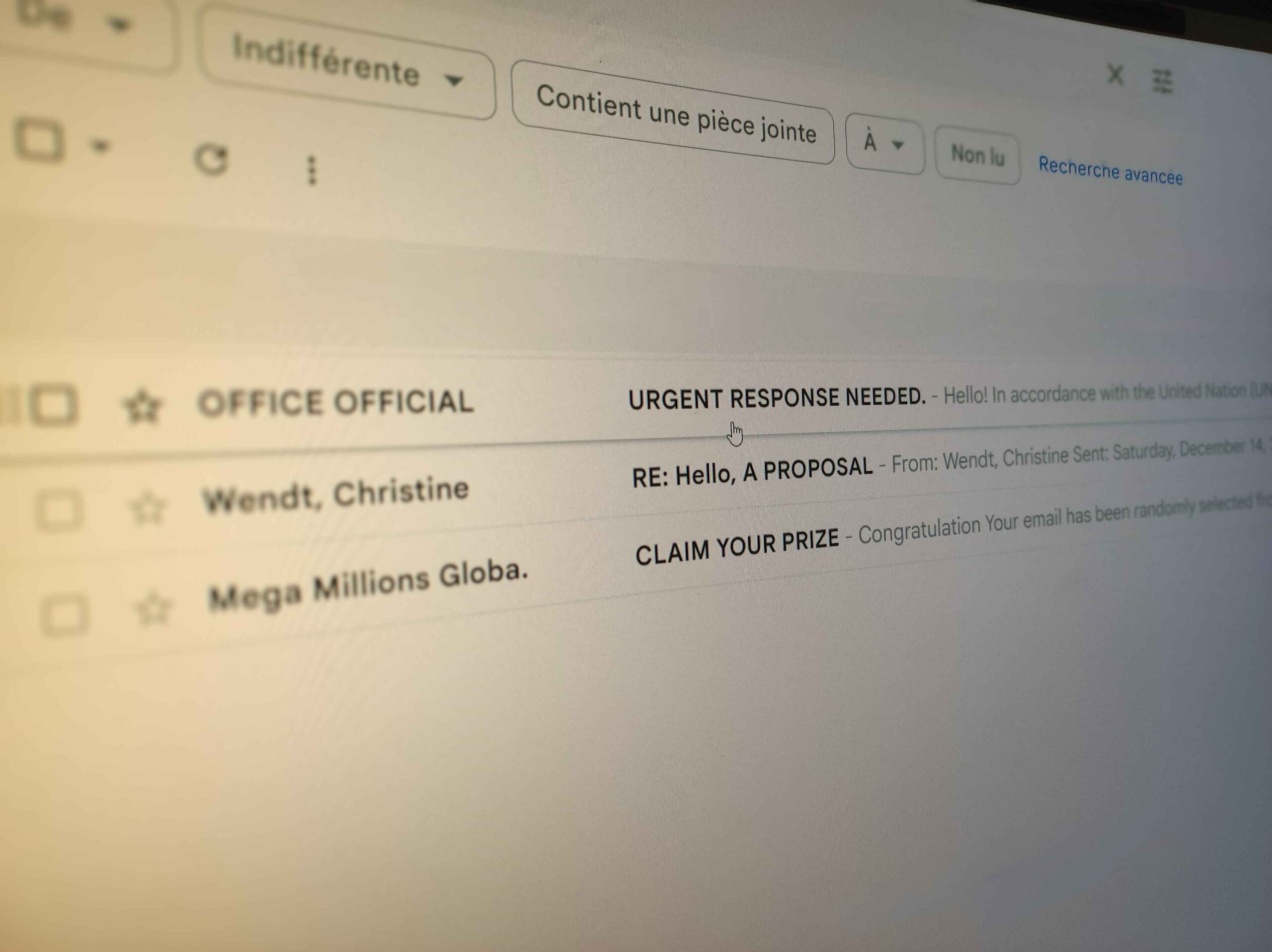
Ever opened an email or text in a panic—saying for instance “URGENT RESPONSE NEEDED”? Spoiler: it’s almost always a bait-and-switch. Phishing is the art of the digital con: sleazy slimeballs tricking you into handing over passwords, credit-card digits, or account access. Let’s pull back the curtain on how those scams work and give you the quick hacks to dodge their hooks.
What is Phishing?
Phishing is when crooks pretend to be someone you trust—your bank, a favorite store, or even your buddy—so you cough up sensitive info. They’ll email you, text you, or ping you on social media with urgent demands or tempting offers. Fall for one of their links or attachments, and you could wake up to drained accounts or a hijacked identity.
How to Recognize a Phishing Attempt
Phishing messages often follow the same playbook. Watch for these red flags:
- False Urgency: “Act NOW or lose access!”—scammers pop off explosive warnings to scramble your common sense.
- Shady Senders: That “support@bankalerts123.com” might actually be “nationalbank@gmail.com” Always hover or press-and-hold to peek at the real address of the email, then google to check your bank’s email address.
- Typos & Poor Grammar: Big companies rarely fire off messages with butchered spelling or awkward phrasing. Errors scream “amateur scam.”
- Generic Greetings: “Dear Customer” instead of your name? That’s a giveaway. Legit services, most of the time, personalize as a security step. There is exception like big announcement or stuff but I personally prefer to “Not Trust 1st January” which means Not Trust-In first, Judge and Allow Next (when i have all my head).
- Fishy Links: Hover your mouse (or copy-paste on mobile) to preview URLs. If it veers off-brand or looks janky, don’t click.
- Unexpected Attachments: Surprise PDFs or ZIP files? Those can drop malware faster than you can say “malicious.”
Common Phishing Scenarios
Scammers love repackaging the same tricks in new costumes. Here’s the usual lineup:
- Fake Bank Alerts (“Your account is locked—verify now!”)
- Online Shopping Woes (“Package undeliverable—update your address!”)
- Social Media Takeover (“Suspicious activity detected—secure your profile!”)
- Charity Scams (“Donate here to help disaster victims—urgent!”)
If it stinks of desperation or too-good-to-be-true generosity, smell test it before you click.
What to Do If You’re Unsure
Never let that inner panic button lead you to a wrong click. Instead:
- Verify the Source by calling or visiting the official site—not the link in the message.
- Type, Don’t Click: Manually enter the known URL in your browser.
- Look for Personal Details: Legit emails use your name or account info.
- Lean on Built-In Shields: Make sure your email spam filters and your browser’s anti-phishing settings are turned on.
- Use AI or Phish-Check Tools: Services like CheckPhish can scan suspicious links for foul play—tools don’t replace caution, but they help.
How to Stay Safe Online
Staying off the phisher’s hook is all about habits, not heroics:
- Pause Before You Click
Scammers bank on panic. Take a beat, read the message twice, and never rush. - Use Strong, Unique Passwords
Reusing “Password123” is like leaving a spare key under the doormat. A password manager crafts unguessable passwords and stores them securely so you don’t have to remember them. - Enable Two-Factor Authentication (2FA)
2FA adds a second lock: after you enter your password (first factor), you must provide another proof—like a one-time code sent to your phone or generated by an authenticator app (second factor). Even if someone nabs your password, they can’t slip past without that extra code. - Keep Software Updated
Updates patch security holes faster than hackers can exploit them. Treat every update notification like a critical alarm. - Learn the Lingo
Terms like phishing, malware, or VPN (Virtual Private Network—a tool that encrypts your internet traffic on public Wi-Fi) get thrown around all the time. Whenever you see a new term, look it up. Understanding keeps you one step ahead. - Report Scams
If you receive a phishing message, report it. You can easily do so through your mailing app. I personally never had to, but if it’s something big you can report it to authorities:- In the U.S., go with the Federal Trade Commission (FTC), if you receive a phishing text message, forward it to SPAM (7726). You can also report the phishing attempt to the FTC at reportfraud.ftc.gov.
- In Canada, visit the instruction at CAFC.
- In Mexico, for phishing incidents related to Mexican banks or services, you can also report them to UNAM-CERT (Universidad Nacional Autónoma de México Computer Emergency Response Team) at phishing@cert.unam.mx or malware@cert.unam.mx. They analyze suspicious emails and take down phishing sites to prevent further harm.
- And Anywhere, you can do it with the Anti-Phishing Working Group (an international organization that focuses on reducing the risks of fraud and identity theft caused by phishing and related incidents) at reportphishing@apwg.org.
Conclusion
Phishing is the scammer’s bread and butter—but you don’t have to be the butter. By spotting the red flags, verifying before you click, and locking down your accounts with strong passwords and 2FA, you can flip the script on these slimeballs. Hungry for more tips?
